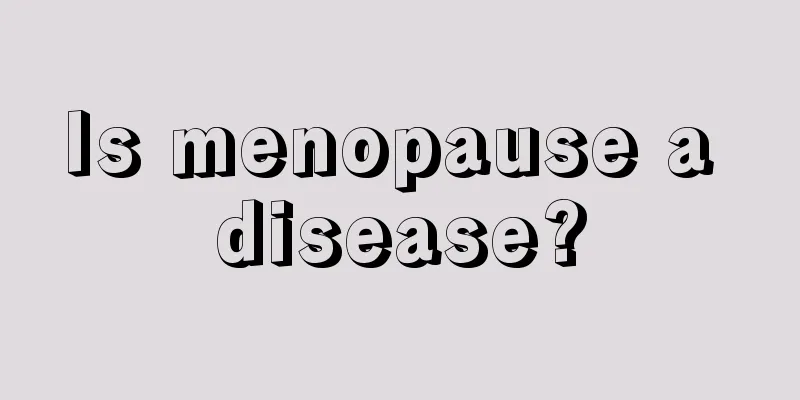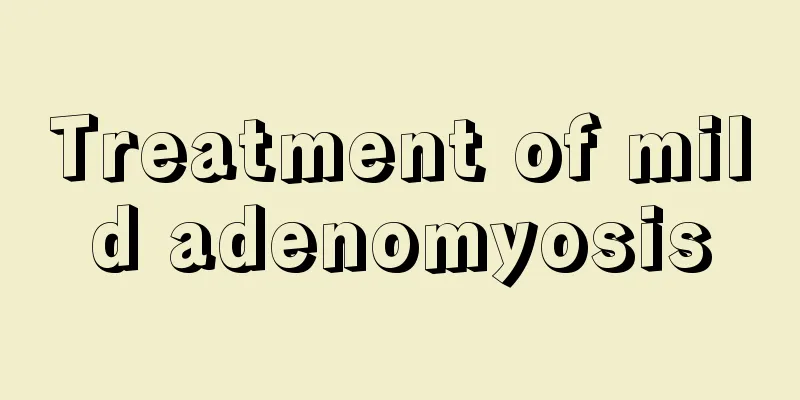What should women do if they have hemorrhoids?

|
It used to be said that "nine out of ten men suffer from hemorrhoids", which means that the proportion of men suffering from hemorrhoids is very high. In fact, the possibility of women suffering from hemorrhoids is even higher than that of men. Many women suffer from hemorrhoids due to pregnancy or childbirth. They often experience symptoms such as anal pain during bowel movements, buttock pain when sitting for a long time, and blood in the stool. So, how should women treat hemorrhoids? Asymptomatic hemorrhoids do not require treatment; symptomatic hemorrhoids do not require radical treatment; non-surgical treatment is the main method. (1) General treatment is applicable to most hemorrhoids, including the early stages of thrombotic and incarcerated hemorrhoids. Pay attention to your diet, avoid alcohol and spicy foods, increase fiber foods, eat more fruits and vegetables, drink more water, change bad bowel habits, keep bowel movements smooth, take laxatives when necessary, and clean the anus after defecation. For prolapsed hemorrhoids, be careful to gently push the hemorrhoids back with your hands to prevent them from falling out again. Avoid sitting or standing for long periods of time, do appropriate exercise, take a sitz bath in warm water (which may contain potassium permanganate) before going to bed, etc. (2) Local medication has been widely used, including suppositories, ointments and lotions, most of which contain Chinese herbal ingredients. (3) Oral medications are generally used to treat varicose veins. (4) Injection therapy is more effective for grade I and II bleeding internal hemorrhoids. The sclerosant is injected around the venous plexus in the submucosal layer to cause an inflammatory reaction and fibrosis, thereby compressing the varicose veins. The treatment can be repeated after one month to avoid injecting the sclerosant into the mucosal layer and causing necrosis. (5) Physical therapy: laser therapy, cryotherapy, direct current therapy, copper ion electrochemical therapy, microwave thermocoagulation therapy, and infrared coagulation therapy are less commonly used. (6) Rubber band ligation is used to tie the root of the hemorrhoids to block their blood supply and cause the hemorrhoids to fall off and necrotize. It is suitable for grade II and III internal hemorrhoids, and is more suitable for giant internal hemorrhoids and fibrotic internal hemorrhoids. Severe cases require surgical treatment. If hemorrhoids are not very serious, non-surgical methods can be used for treatment, such as Chinese medicine fumigation, deep suppository, etc. When it is serious, surgical treatment is required. Eating less spicy food, drinking more water, eating more laxative foods, avoiding constipation, and doing pelvic floor exercises regularly can all relieve the symptoms of hemorrhoids. |
<<: What are the benefits of drinking honey for women?
>>: What should women do if they have lower abdominal pain when urinating?
Recommend
I bet 99% of people have never eaten this magical vegetable that can make lamb less smelly!
If you ask "Where in China is the most delic...
What are the symptoms of protruding labia minora?
Protruding labia minora is also called labia mino...
HPV tests were negative
HPV testing is an examination of cervical lesions...
What diseases can cause insufficient blood supply to the brain? How to prevent insufficient blood supply to the brain?
The standard for measuring the blood supply to th...
Is it still accurate to do nt test at 14 weeks?
Pregnant women are very concerned about the healt...
How to make hair grow faster
Whether boys or girls, they all prefer girls with...
Is the discharge of flesh in menstrual blood a blood clot?
Nowadays, many women with abnormal menstruation o...
Where do earwax, eye mucus, and nose mucus come from? They are actually good things...
Expert of this article: Meng Yao, Doctor of Medic...
What should I do if my period doesn’t come?
Menstruation is something that women are very fam...
Can postpartum women eat sea cucumbers?
Song Xiaobao's "Sea Cucumber Fried Noodl...
What should girls do to lift their hips and slim their legs?
Many women want to have a perfect body because bo...
Pros and cons of natural birth and caesarean section
When a woman is giving birth, there are generally...
My period has come for half a month and it still doesn't stop. What should I do?
As we all know, women always have a week every mo...
Can I have abortion by medicine if I am more than 40 days pregnant?
There are two main ways to perform an abortion, o...









